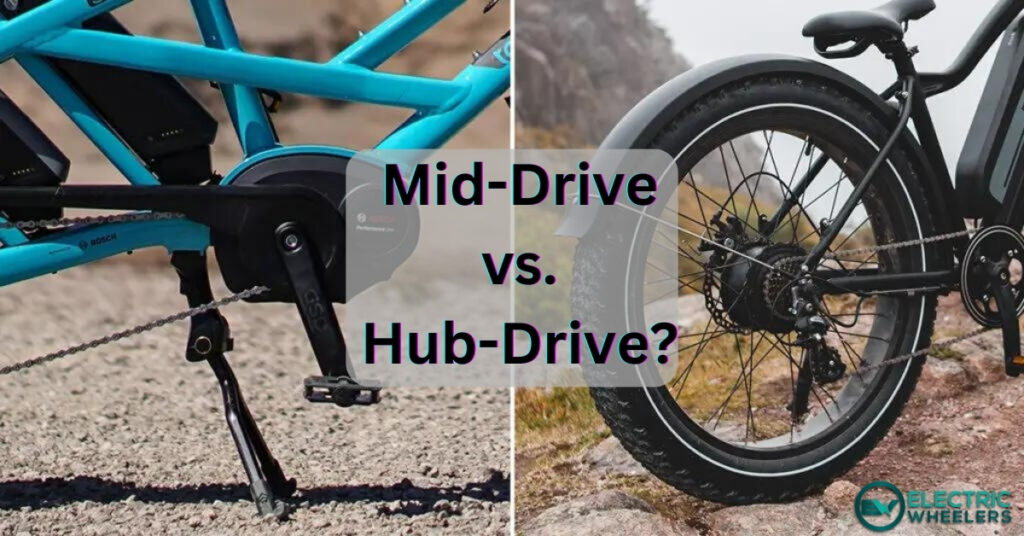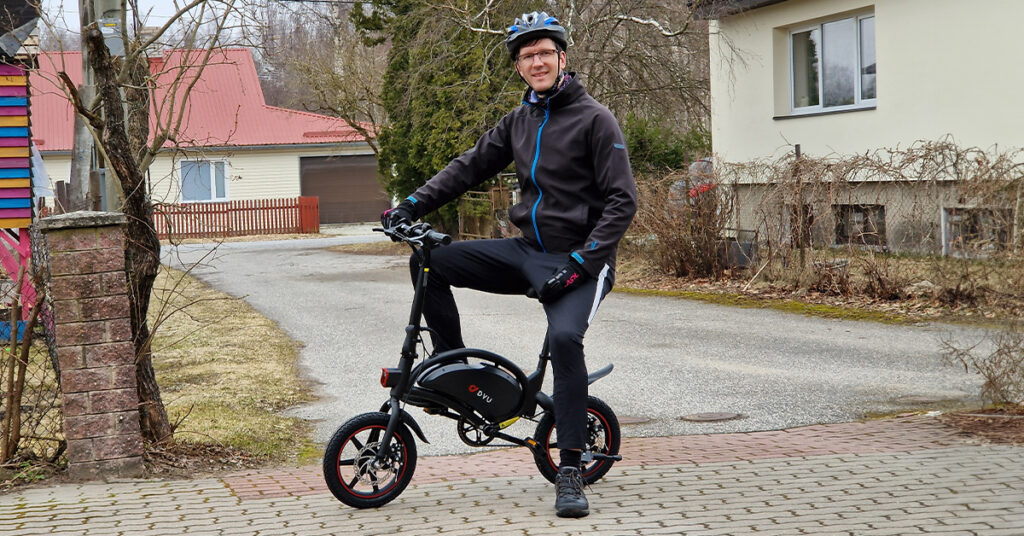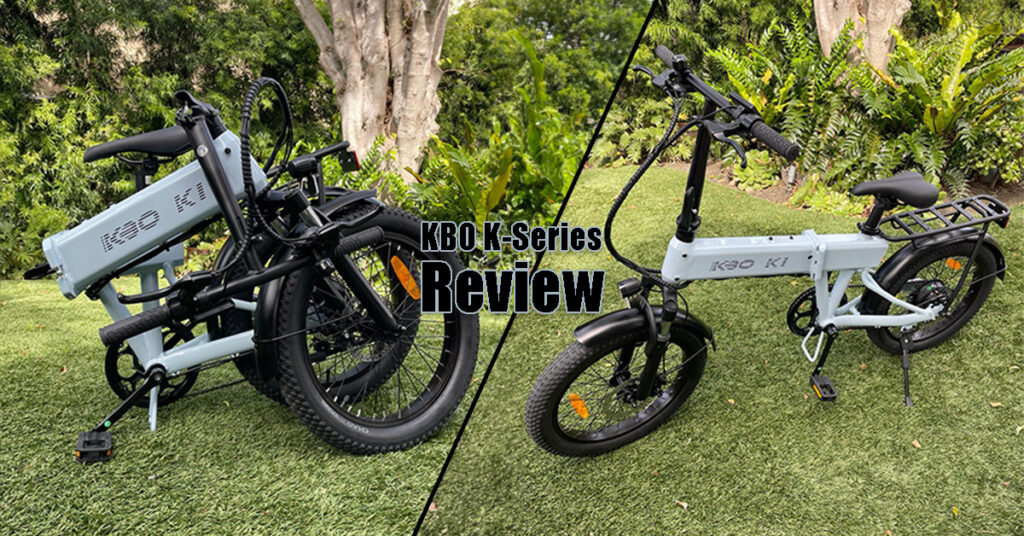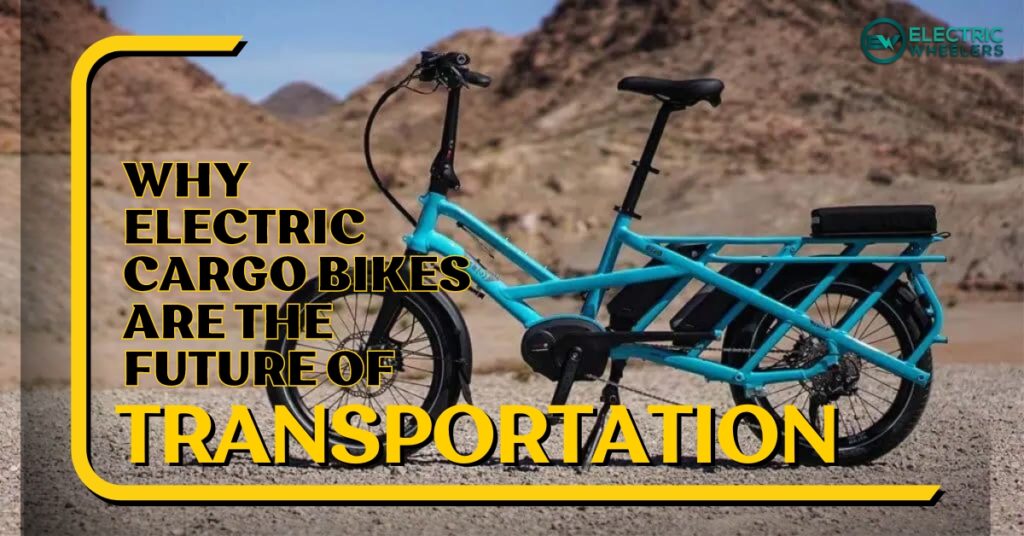Motors are a few of the primary components of an electric bike. They are a source of power providing assistance in pedaling. Motors are available in different sizes, designs, and power outputs, depending on the rider’s needs.
There are two common types of electric bike motors – hub-drive and mid-drive motor. Both are mounted in different locations on the bike.
The Hub motor is located inside of the wheel (rear wheel in most cases) and is common in cheaper e-bikes. Mid-drive motors are integrated along the center of the bike between the pedals and are more common in expensive electric bikes.
In this blog post, I will explain how these motors work and how they differ from each other.
Understanding How Electric Bike Motor Works
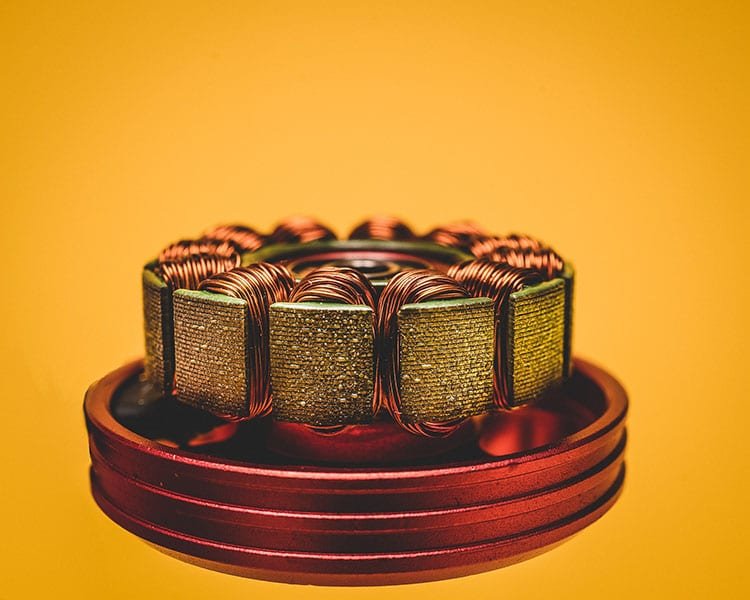
Essentially, an electric bike motor functions by converting electrical energy, stored in the bike’s battery, into mechanical energy, which propels the bike forward.
This conversion process starts when you either pedal the bike or use a throttle. Pedaling activates a sensor, signaling the motor to start.
In pedal-assist e-bikes, this means the motor provides you with a boost as you pedal, making the ride less strenuous, especially uphill or over long distances. Throttle-based systems, on the other hand, directly engage the motor through a handlebar control, allowing the bike to move without pedaling.
The motor receives this signal and uses the battery’s electrical energy to rotate the wheel. This rotation is what drives the bike forward.
It’s worth noting that at its core, both mid-drive motors and hub motors in electric bikes work on the same basic principle: converting electrical energy into mechanical energy to assist with propulsion.
Pedal Assistance vs Throttle
Note that all e-bikes have a pedal-assist feature. Additionally, some e-bikes have a throttle too.
Pedal-assist e-bikes provide electrical assistance and power from the motor to propel the bike forward as you push the pedals. You can choose the pedal assist level according to how hard is the terrain and how much assistance you need.
The throttle, on the contrary, is a small input device fixed on the handlebars to control the bike speed when pressed. When you engage the throttle, the motor activates and moves the bike forward. If the throttle is engaged, you do not have to peddle to keep the bike moving.
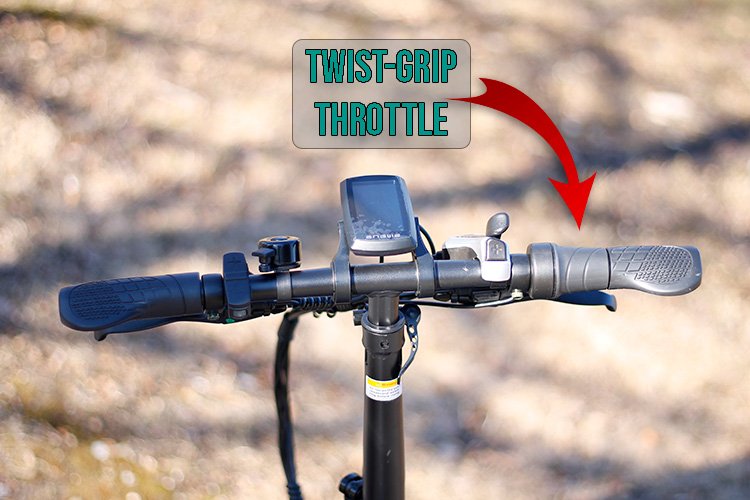
Assistant Levels
No matter if the bike has only pedal assistance or also has a throttle, you can choose how much motor assistance you want.
For example, if the battery is getting low, you can choose a low assistance level. Then you have to pedal harder to maintain the desired speed or the bike goes slower.
On the other hand, if you are tired and the battery has enough energy, you can choose a high assistance level. Then the bike goes fast even though you provide no or minimal effort.
My e-bikes have mostly five assistant levels, where 1 provides very little assistance and 5 basically does all the work. Actually, there is a zero level too, which means the motor doesn’t help at all.
But I have also ridden e-bikes that have a system like this: OFF > ECO > TOUR > SPORT > TURBO.
Differences Between Mid-Drive and Hub-Drive Motors
As I said right in the beginning, e-bikes mostly come with a hub motor or a mid-drive motor. There are actually some other technologies as well like friction-drive motors but they are so rare so I won’t cover these in this blog post.
Mid-Drive Motor

Mid-drive motors are installed along the mid-frame bottom bracket of the electric bike. They are in this position to provide better weight distribution on the bike. Also, the motor is close to the pedals to drive the chain or belt drive.
They provide assistance by augmenting the rider’s pedal power, working through the bike’s existing drivetrain. This means the motor’s power is integrated with the bike’s gears, allowing for more efficient use of energy and better performance, especially on hills and rough terrains. Mid-drive motors are often preferred for pedal-assist systems.
Pros and Cons of Mid-Drive Motors
Hub-Drive Motor
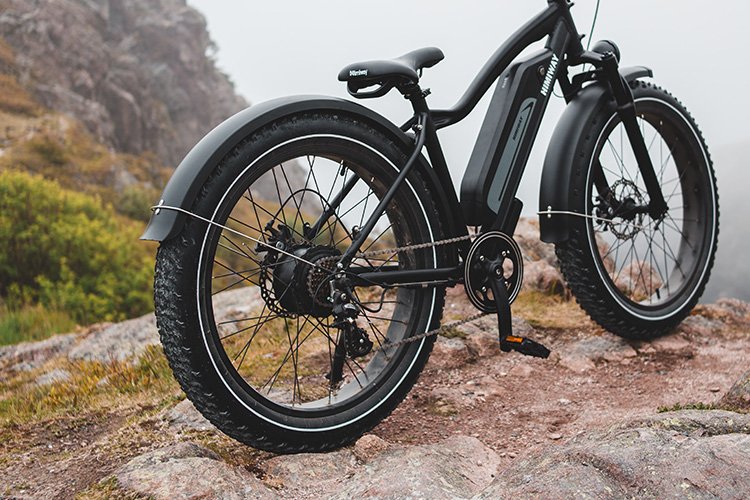
Hub motors are located in either the front or rear wheel hub (mostly rear wheel.) When activated, they directly drive the wheel in which they are installed.
This means the motor provides direct propulsion to the wheel, independent of the bike’s gears. Hub motors are simpler in design and function, and they’re often used in throttle-activated systems.
Hub motors are available in two different variations – the direct-drive and geared hub motors.
A direct-drive hub motor is a larger, simpler type of motor that operates without any internal gears. It’s integrated directly into the wheel’s hub and rotates the wheel as it turns. This type of motor is known for its durability and ability to provide a smooth, quiet ride, but it’s typically heavier and less effective on steep hills.
In contrast, a geared hub motor is smaller and includes internal gears. These gears allow the motor to spin several times for each wheel turn, providing more torque. This makes geared hub motors more efficient, especially for climbing hills or starting from a stop. They are lighter and more compact but can be slightly noisier than direct-drive motors due to the presence of gears.
Hub-Drive Motor Pros and Cons
Mid-Drive vs Hub Motor: Which is Better for you?
When deciding between a mid-drive and a hub motor for your electric bike, the best choice hinges on your specific needs and riding style.
Mid-Drive Motors excels in performance, especially if you’re tackling hilly terrain or need a more natural biking experience.
Their integration with the bike’s gears makes them ideal for riders who crave a dynamic and responsive ride, akin to traditional cycling but with an added boost. They distribute weight more evenly, enhancing stability and balance.
However, they are typically pricier and may require more maintenance.
Hub Motors, on the other hand, offers simplicity and cost-effectiveness. If you’re seeking a straightforward, consistent power delivery for urban commuting or casual riding on relatively flat terrains, a hub motor is an excellent choice.
They are easier to install and maintain, making them suitable for beginners or those on a budget. However, they might not provide the same level of efficiency on steep inclines as mid-drive motors.
Ultimately, if you prioritize performance, challenging terrains, and have a higher budget, a mid-drive motor is likely your best bet. Conversely, for cost-conscious riders, or if you’re mainly riding on flat surfaces, a hub motor will serve you well.
Motor Power and Torque Explained
Power and torque are two crucial terms in an electric bike’s motor for determining the overall riding experience and the bike’s performance. When talking about e-bike motors, it’s essential to know their meanings.
The motor power is measured in watts (W). It indicates the bike’s potential top speed. A higher wattage means the motor can achieve higher speeds, making it a key factor for those who prioritize fast travel.
It’s the measure of how much energy the motor can use over time. Essentially, a more powerful motor (e.g., 750W vs. 250W) can propel the bike faster, especially on flat and open terrains.
Torque is measured in Newton meters (Nm). It shows the motor’s strength for acceleration and hill climbing. It represents the force with which the motor can turn the wheel, directly impacting the bike’s ability to start quickly from a stop and climb steep hills effectively.
Higher torque results in better performance during these scenarios. It’s especially important for those who ride in hilly areas or require quick acceleration, like in urban stop-and-go situations.
Both are important, but their significance varies based on your riding conditions and requirements. If speed is your priority, focus on motor power. If you’re dealing with hills or frequent stops, torque will be more important.
Nominal Power vs Peak Power
When browsing e-bike specifications, you might notice two different power ratings: ‘Peak Power’ and ‘Nominal (or Continuous) Power.’
Nominal Power refers to the consistent power output the motor can sustain over extended periods without overheating or experiencing wear. It’s a reliable indicator of the bike’s standard performance during regular use.
Peak Power represents the maximum power the motor can deliver in short bursts, useful for situations like rapid acceleration or climbing steep hills. This higher power level cannot be sustained for long without risking damage to the motor.
Essentially, while ‘Peak Power’ shows the motor’s top capability in demanding situations, ‘Nominal Power’ is a more practical measure of everyday performance and endurance.
Knowing both helps you gauge the e-bike’s range of capabilities, from its cruising efficiency to its maximum potential in challenging conditions.
Popular E-Bike Motor Brands
Mid-Drive Motor Brands:
Rear-Hub Motor Brands:
E-Bike DIY Systems: E-Bike Conversion Kits
When talking about e-bike motors, I can’t fail to mention about conversion kits.
An e-bike’s conversion kit is a Do it yourself (DIY) system that allows you to convert any regular bicycle into an electric bike despite its size and type. Typically, the conversion kit includes a battery, motor, controller, and display unit.
Note that ordinary conversion kits are available in different types. But here are the most common ones.
Front-wheel conversion kits: They come with the front hub motor, controller, battery, and throttle. They are also an essential choice for most traditional bikes.
Rear-wheel conversion kits: They are among the most popular choices in the market because they are easy to install and ideal for casual riders. A rear-wheel conversion kit includes the battery, rear hub motor, throttle, and controller.
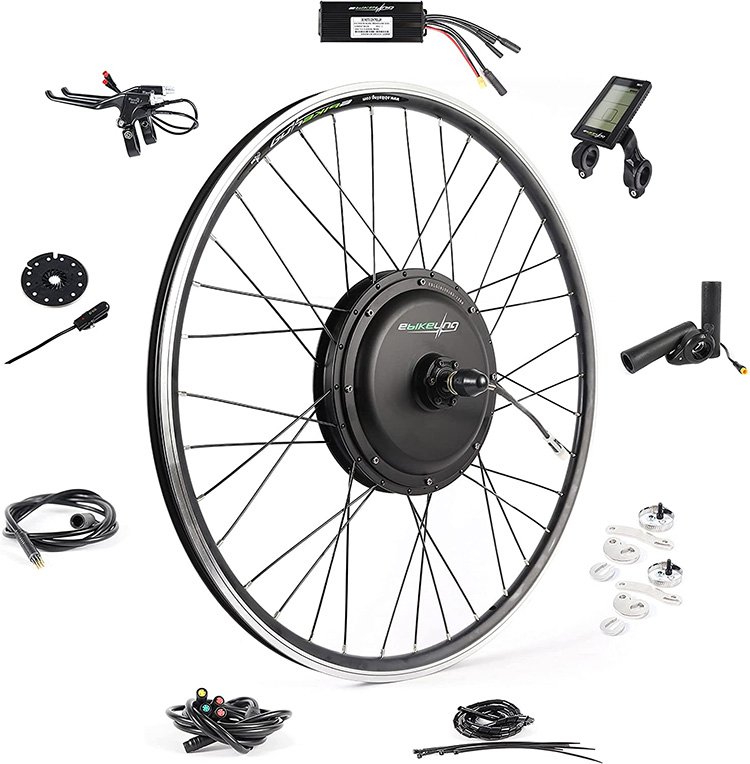
Mid-drive conversion kits: They offer improved performance but can be challenging to install. They include the battery, mid-drive motor, controller, and display.
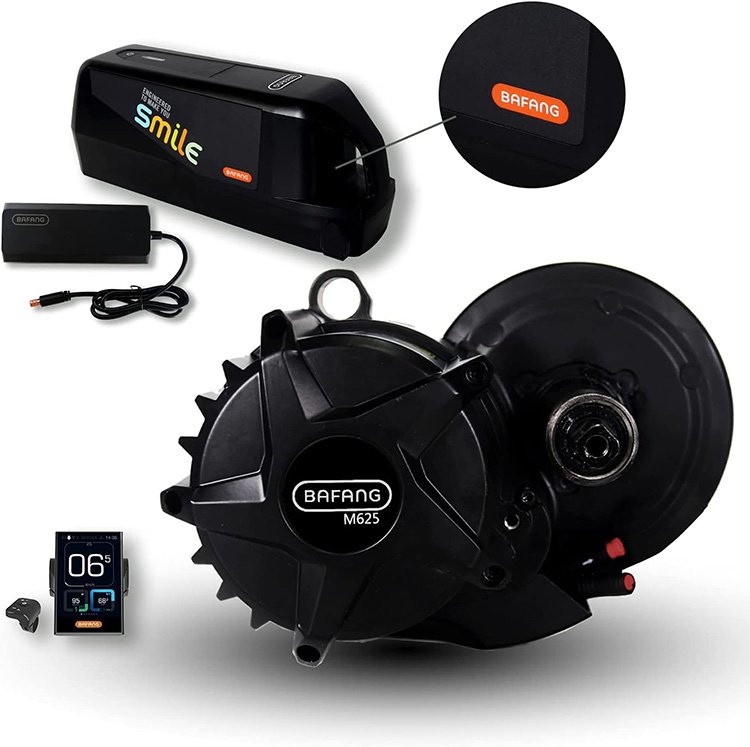
For now, I won’t go into more detail with conversion kits. But just for your knowledge such systems exist.
Final Words on E-Bike Motors
Navigating the world of electric bikes can seem daunting with the various technical specifications and features. Understanding the differences between mid-drive and hub motors is crucial in selecting the right e-bike for your needs.
Remember, it’s not just about the highest numbers on the spec sheet, but about finding the right balance that aligns with your riding style and requirements.
With this knowledge in hand, you’re now equipped to make an informed and confident decision on your e-bike journey.
Read next: How to Choose an Electric Bike

The founder and the editor-in-chief of the Electric Wheelers blog. With a previous background in IT, sales, and video editing, he has now established himself as a micromobility expert.
He bought his first e-scooter over 5 years ago and since then has owned dozens of e-scooters and e-bikes. His deep understanding of the technical aspects, coupled with a keen eye for market trends, enables him to provide insightful and reliable content.
His commitment to promoting sustainable and efficient urban mobility solutions has made him a respected voice in the community of eco-friendly transportation enthusiasts.

